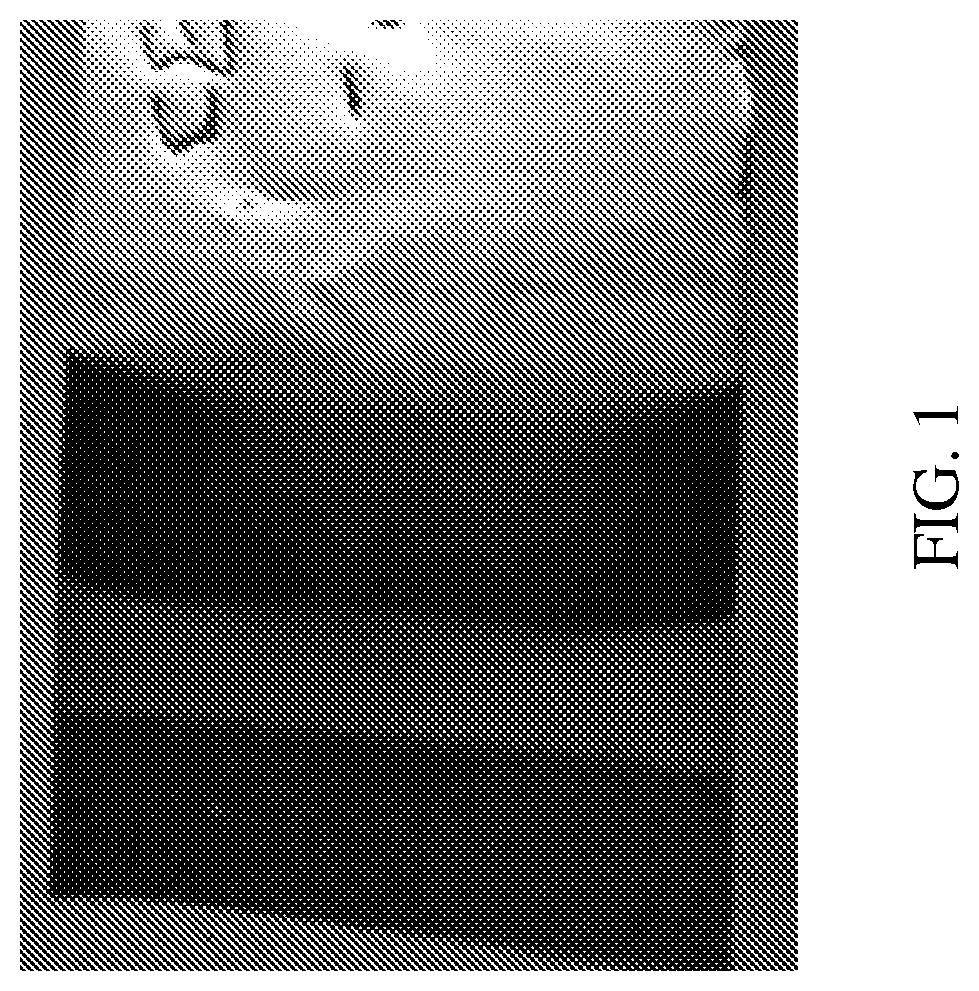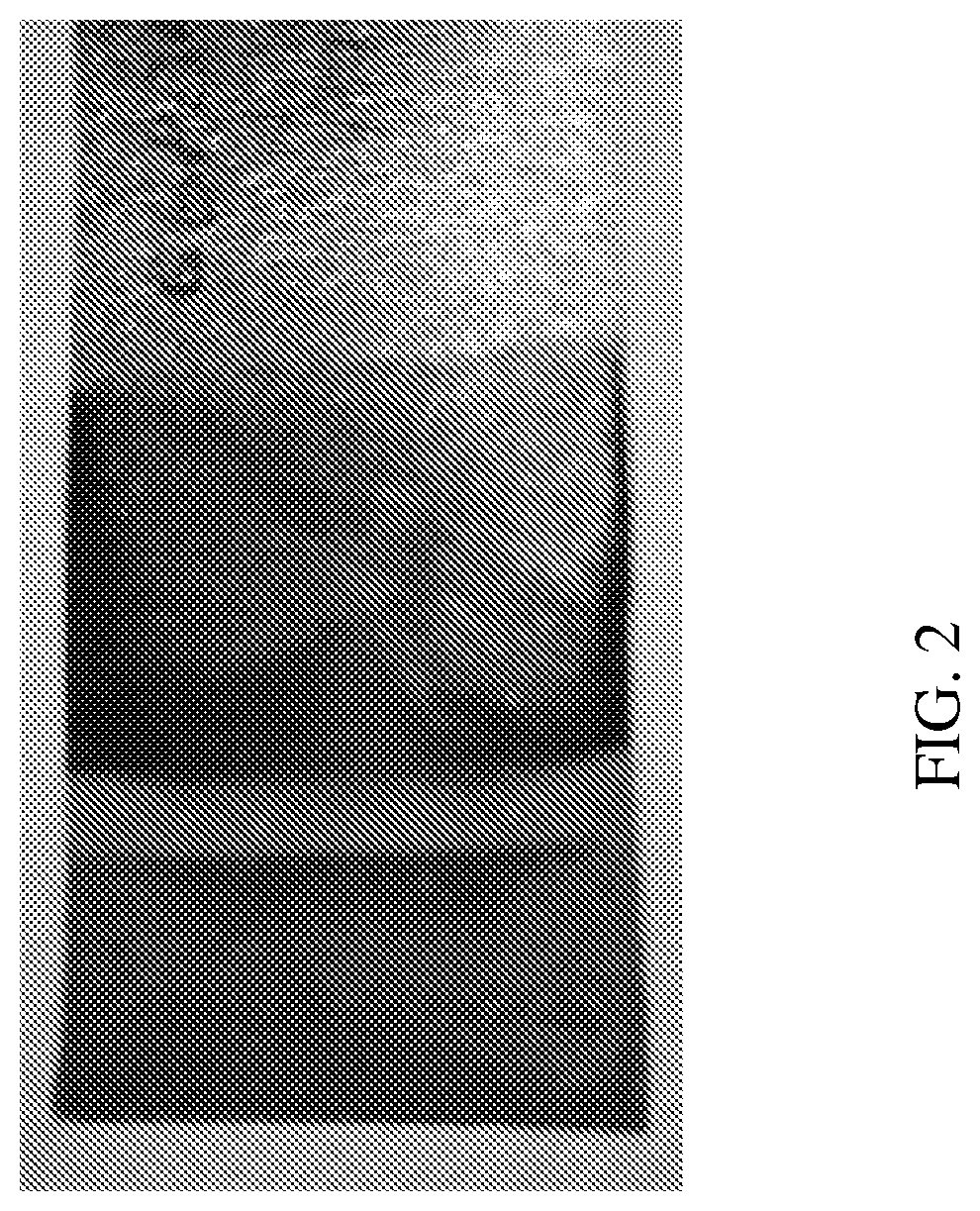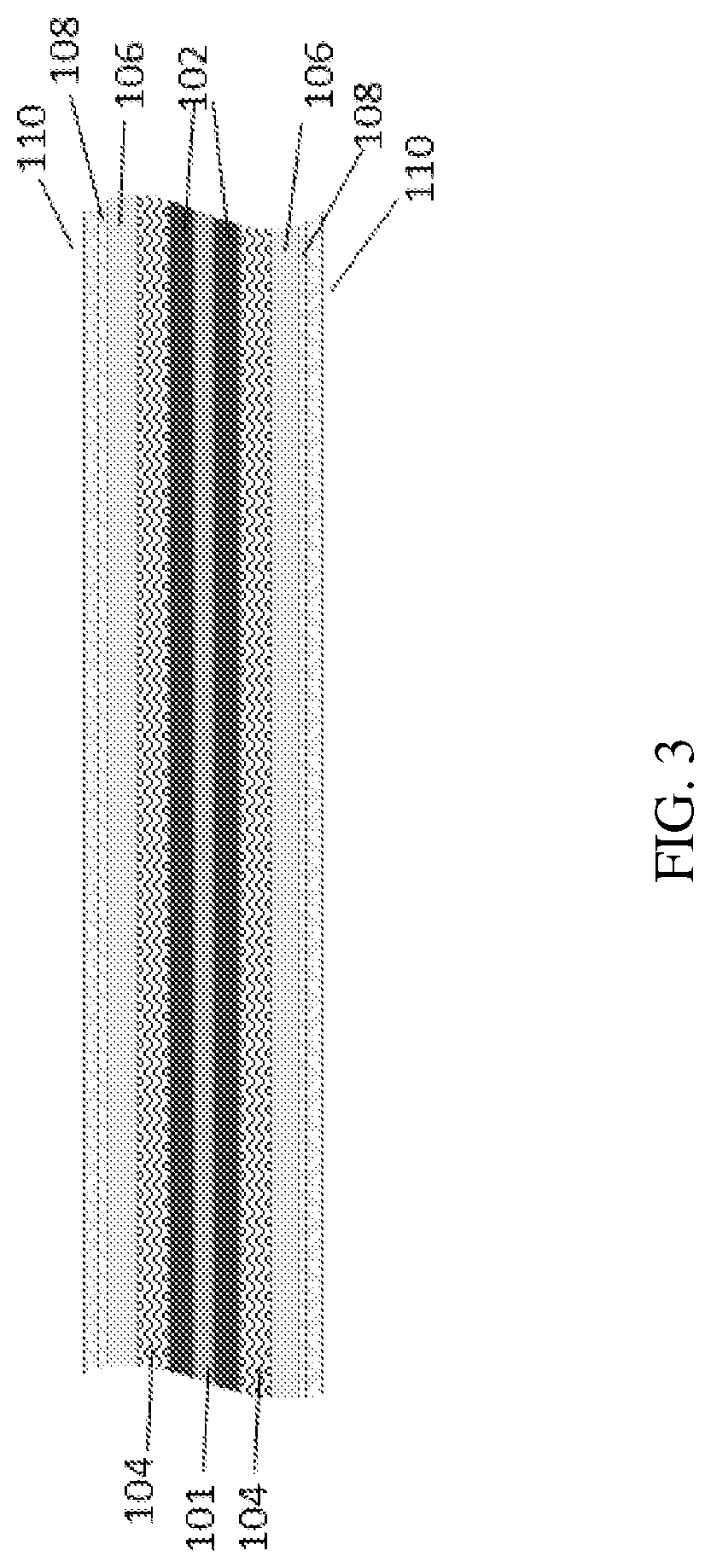Energy storage devices and systems
a technology of energy storage and energy density, applied in the direction of nanobatteries, cell components, sustainable manufacturing/processing, etc., can solve the problems of requiring a large footprint, and reducing the energy density of the energy storage device, so as to achieve stable dispersion and stable nanoparticle dispersion
- Summary
- Abstract
- Description
- Claims
- Application Information
AI Technical Summary
Benefits of technology
Problems solved by technology
Method used
Image
Examples
examples 1 and 2
hin-Film Battery Comprising the Packaging Element According to Some Embodiments of the Present Invention (Consecutive Layers)
[0177]Two samples were prepared by electrophoretic deposition (EPD) of LiCoO2 cathode on a substrate, polymer-ceramic separator (alumina and PVDF binder) and graphite anode. Example 1 was prepared on an aluminum substrate and Example 2 was prepared on a conducting fiber composed of 57% polyester, 23% copper and 20% nickel.
[0178]Two additional samples of a neat aluminum substrate (Example 3) and a neat conducting fiber substrate (Example 4) were also taken as reference samples and deposited with parylene layer.
[0179]Each sample was marked using a marker prior to parylene deposition.
[0180]FIG. 1 shows a thin-film battery comprising the packaging element according to Example 1 of the present invention and FIG. 2 shows a thin-film battery comprising the packaging element according to Example 2 of the present invention.
[0181]Deposition of Thin-Film Battery of Examp...
examples 5 and 6
hin-Film Battery Comprising the Packaging Element According to Some Embodiments of the Present Invention (Joining of Layers)
[0185]LiCoO2 cathode layer was prepared by EPD on an aluminum substrate, graphite anode was prepared by EPD or by doctor-blade, and Celgard® (25 μm thick) separator layer was disposed between the anode and cathode layers. Example 5 was prepared on an aluminum substrate and Example 6 was prepared on a conducting fiber composed of 57% polyester, 23% copper and 20% nickel.
[0186]A full cell was assembled by joining the above components (cathode, separator, anode) together.
[0187]A needle was positioned between the layers for impregnating a liquid electrolyte within the separator layer inside the cell.
[0188]Parylene packaging layer was deposited according to the procedure described in Example 1 and Example 2 above.
[0189]Electrolyte Leakage Test:
[0190]Electrolyte comprising 1M LiPF6 Ethylene carbonate and dimethyl carbonate in 1:1 volume ratio, 0.5 ml was inserted thr...
example 7
oretic Deposition of Composite Graphene and Silicon-Graphene Anode from Aqueous Electrophoretic Bath
[0192]Stable graphene colloids modified by oxidation product of p-phenylene diamine (OPPD) is synthesized. Exfoliated graphen oxide (rGO) / graphene oxide (GO) is prepared from natural graphite. The graphitic oxide was prepared by adding powdered flake graphite and of sodium nitrate in the weight ratio of 2:1 into sulfuric acid.
[0193]Potassium permanganate in the weigh ration of 3:1 to graphitic oxide was added to the suspension. After 30 minutes, the suspension was diluted and treated with hydrogen peroxide to reduce the residual permanganate and manganese dioxide to colorless soluble manganese sulfate. The suspension was filtered to collect the graphitic oxide.
[0194]GO in the concentration of 0.5-2 g / l in water is mixed and sonicated with 5-10 g / l of p-phenylene diamine (PPD) dissolved in N,N dimethylformamide (DMF) or Triton X 100 surfactant. The colloid and the solution is mixed and...
PUM
| Property | Measurement | Unit |
|---|---|---|
| thickness | aaaaa | aaaaa |
| thickness | aaaaa | aaaaa |
| voltage | aaaaa | aaaaa |
Abstract
Description
Claims
Application Information
 Login to View More
Login to View More - R&D
- Intellectual Property
- Life Sciences
- Materials
- Tech Scout
- Unparalleled Data Quality
- Higher Quality Content
- 60% Fewer Hallucinations
Browse by: Latest US Patents, China's latest patents, Technical Efficacy Thesaurus, Application Domain, Technology Topic, Popular Technical Reports.
© 2025 PatSnap. All rights reserved.Legal|Privacy policy|Modern Slavery Act Transparency Statement|Sitemap|About US| Contact US: help@patsnap.com



